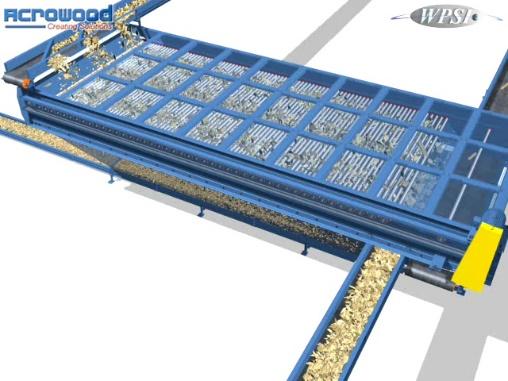- Products
-
Paper and board
- Water treatment
- Wood and chip yard
- Pulp making
- Pitch control
- Defoamers
- Press fabrics
- Detergents
- Strength enhancers (Biopolymer)
- Additives for wet strength broke pulping
- Additives for fiber modification
- Additives for peroxide bleaching
- Magnesium hydroxide
- Enzymes
- Organic Deposit Control
- Inorganic Deposit Control
- Edge showers
- Adjustable shower pipes
- Scanjet tank cleaners
- iFibre
- Starch Performer starch cooker
- Screw presses
- Double wire presses
- Disc filters
- Bale handling systems
- Baler wires
- Wire section
- Defoamers
- Dewatering elements, ceramics and PE
- iTable and dewatering elements optimization
- Dewatering elements
- Fabric tensioning
- Doctors, oscillating and shower systems
- SuperSteamVac steam box
- Edge trimming and tail cutter, ruby nozzles
- Edge showers and edge trimming
- Vacuum control valves
- Fabric cleaning and conditioning
- Slime control
- Banform SSB wires
- Online monitoring and controlling – Online-PDC
- Online monitoring and controlling – Flowmaster
- TableVision – Activity Vision
- TableVision – Jet Vision
- TableVision -Line Vision
- TableVision – FlocVision
- Fabric Guides
- Retention agents
- Press section
- Drying
- Air flotation dryers and air turn solutions
- Fabric cleaning agents
- Degreasers
- Yankee roll release agents
- Bandry woven dryer fabrics
- Bandry PPS hydrolysis resistant dryer fabrics
- Bandry fabrics for broke conveyor
- Electric Infra-Red dryers – DryMaster™
- Electrical IR wet edge dryers – EdgeMaster™
- Gas IR and air drying systems – UniDryer®
- Energy recovery systems
- Gas IR dryers – GemDryer®
- Air dryers – FoilMaster™
- Coating
- Reeler and finishing
- Monitoring
-
Chemical pulping
- Water treatment
- Wood and chip yard
- Fiber line
- Drying
- Pitch control
- Defoamers
- Adjustable shower pipes
- Dewatering elements, ceramics and PE
- Fabric tensioning
- Doctors, oscillating and shower systems
- SuperSteamVac steam box
- Edge trimming and tail cutter, ruby nozzles
- Edge showers and edge trimming
- Vacuum control valves
- Online monitoring and controlling – Online-PDC
- Online monitoring and controlling – Flowmaster
- Fabric Guides
- Safetymaster
- Strength enhancers (Biopolymer)
- Dewatering elements optimization
- Microbiological control
- Cylinder protection agent
- Forming fabrics
- Baler wires
- Recovery
- Condition monitoring
- Mechanical forest industry
- Biomaterials
- Green transition sectors
- Electrification and energy solutions
- Biogas and biofuels
- Petrochemicals
- Mining industry
- Metal industry
-
Paper and board
-
Partners
- Acrowood
- AstenJohnson Advanced Fabrics
- Bellmer
- BERGER
- Bollfilter
- Broadwire
- Buckau-Wolf GmbH
- CERNEY
- Eaton
- ECOWORLD
- FMW Industries
- GIG Karasek
- HeatHamster
- Herco
- Horst Sprenger
- IBS Austria GmbH
- Ichikawa
- Innocode
- Ircon Solaronics
- James Ross
- JTR ROLLS
- JUD AG
- Kapotek
- KOHO
- LMF
- MAAG Group
- Meidinger AG
- Papertech
- PGA
- Pieralisi
- Pirobloc
- PMS
- Renk Group
- Scanjet Systems
- Schaumann Bioenergy
- sera Group
- Spooner Industries Limited
- Teufelberger
- Transphase
- UMV Coating Systems
- Vakuo
- Sustainability
- Company
- Contact us
Products
Chip screening
Thickness Screens
The Roll screens feature a textured roll surface that allows the easy passage of fines or particles as the roll turns. Adjacent rolls are spaced so that only the surface-captured fines can pass between them. The active environment which takes place in the space between rolls (nip) allows the pin chips to continually pick the surface of the rolls clean.
The process of cutting knurl patterns on rolls produces a surface on the shaft which is like a series of pyramids. The tips of the pyramids can be pointed or flat. The height of the pyramid, or the depth of the space between them, represents the capture dimension of the shaft itself, the IRO (inter-roll opening) of the nip is the clear spacing between two effectively cylindrical shafts.
Three factors affect the overall performance of a roll screen. These are knurl depth, IRO (inter-roll opening), and roll speed. Knurl depth is the most important because the overall dimension of the depth of the valley is such a dominating factor in controlling the capture characteristic of the shaft itself. Inter roll opening is second, as this is the dimension that excludes the thin woody particles from passing with the fines. Pin chip loss can be strongly affected by IRO. Roll speed has a role to play by ensuring the materials are fluidized on the screen surface, and are moved briskly from infeed to discharge, but are not sped along so quickly that the fines fail to contact the screen surface.

Contact us
Mika Puhakainen
- Sales Manager, Process Equipment
- mika.puhakainen@banmark.fi
- +358 400 498812
Available
- FI
